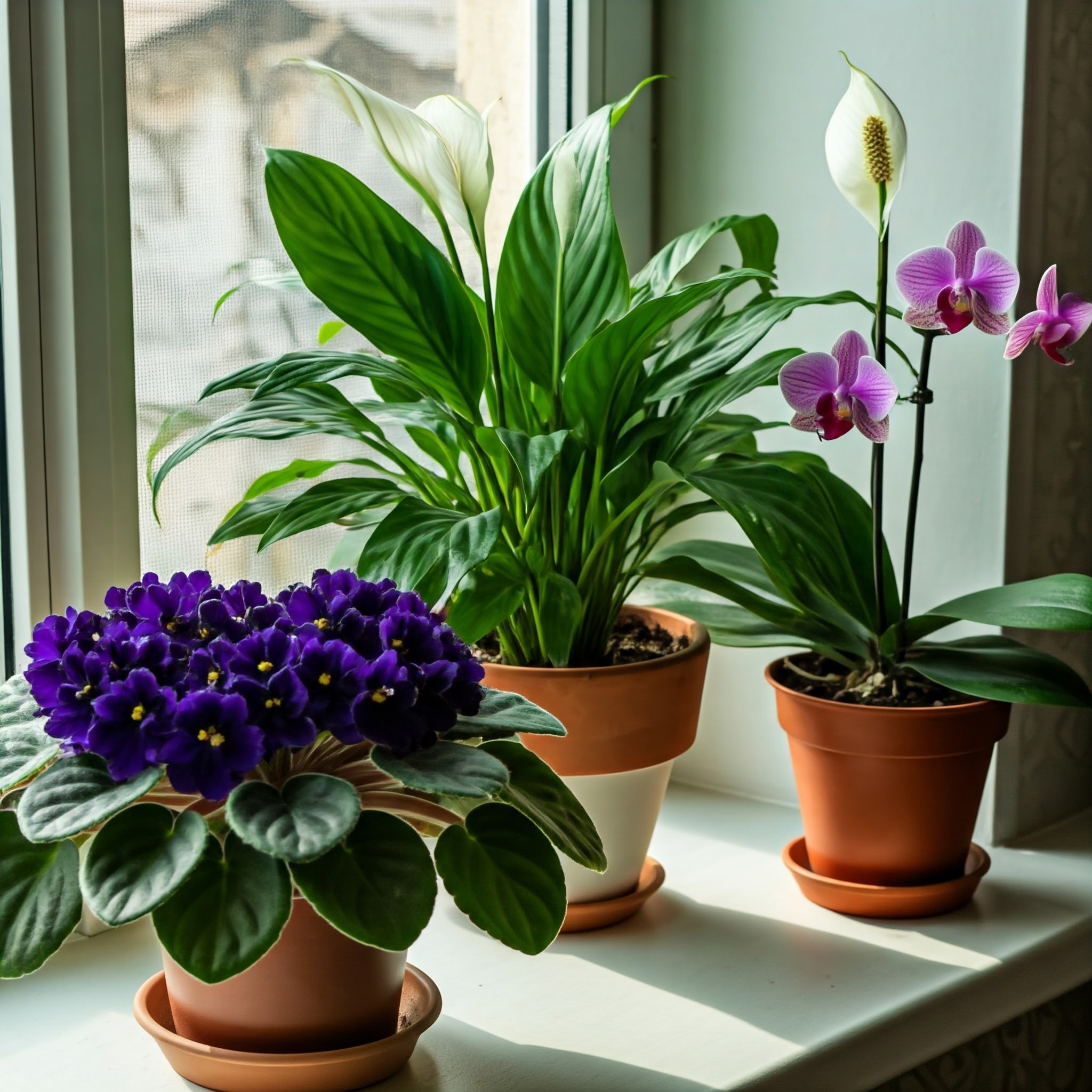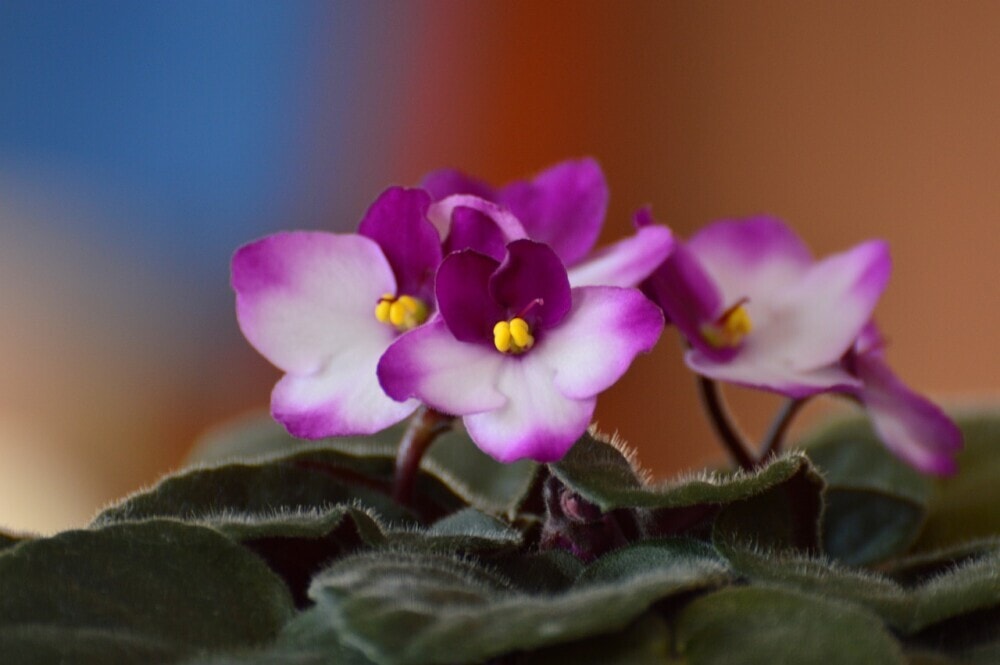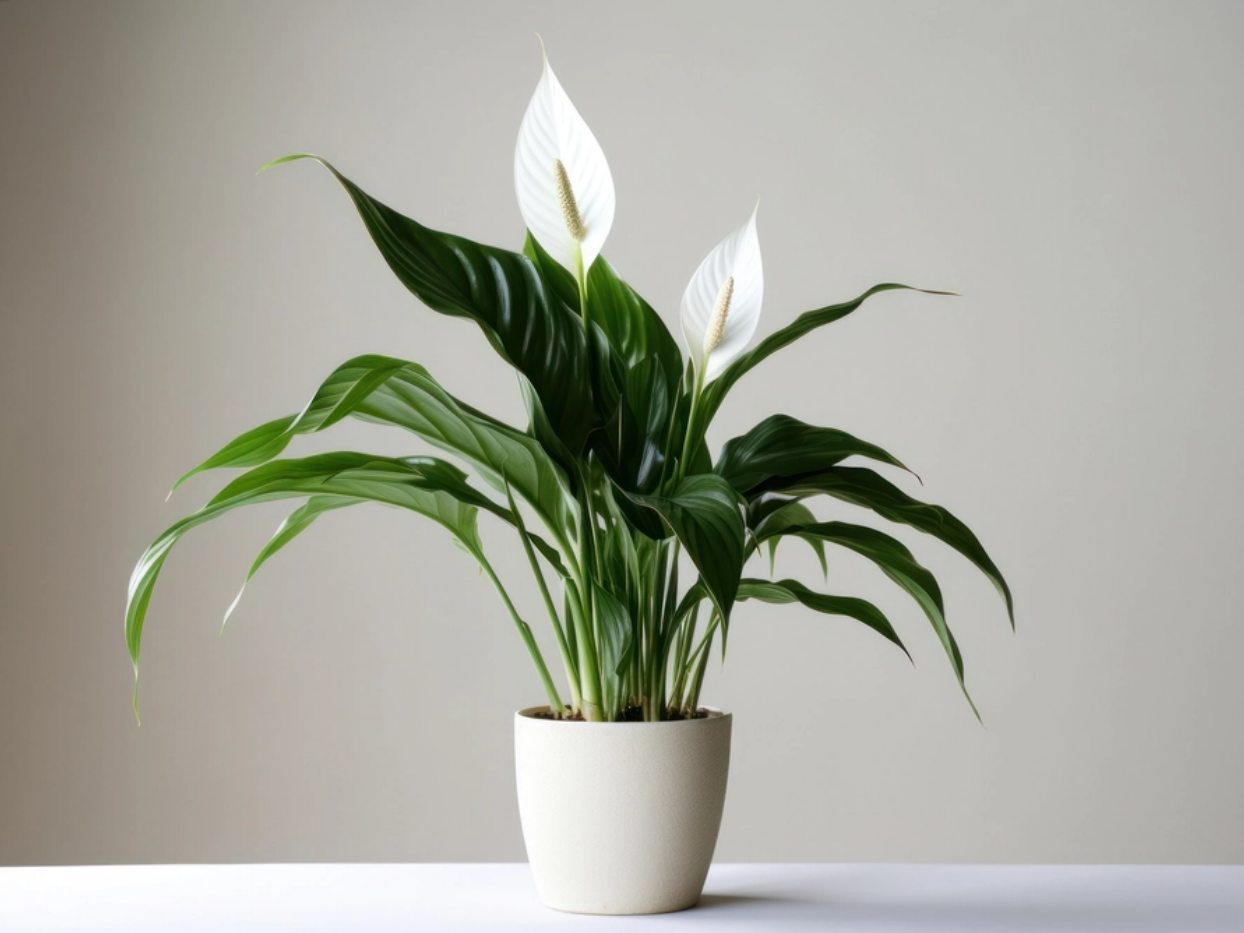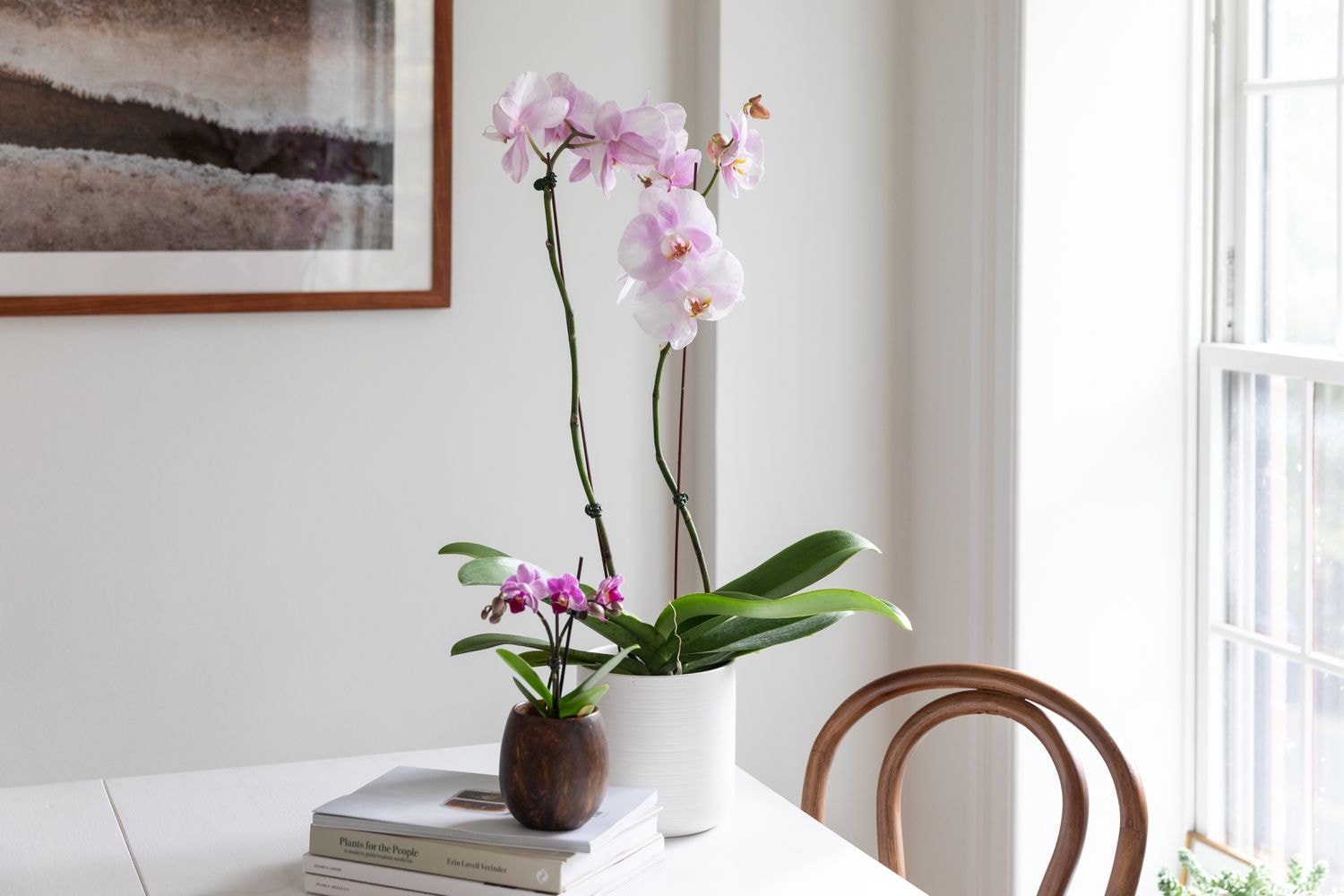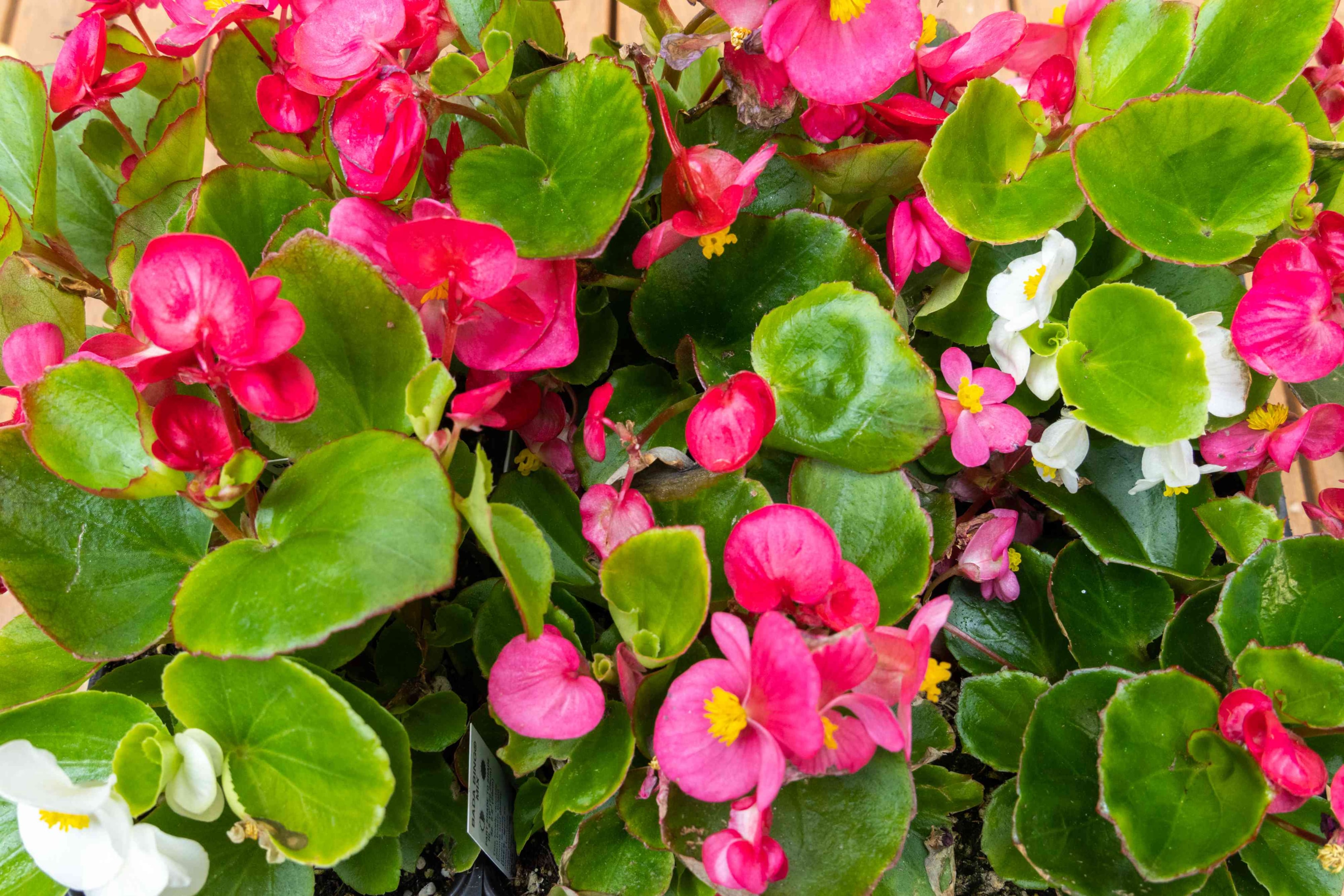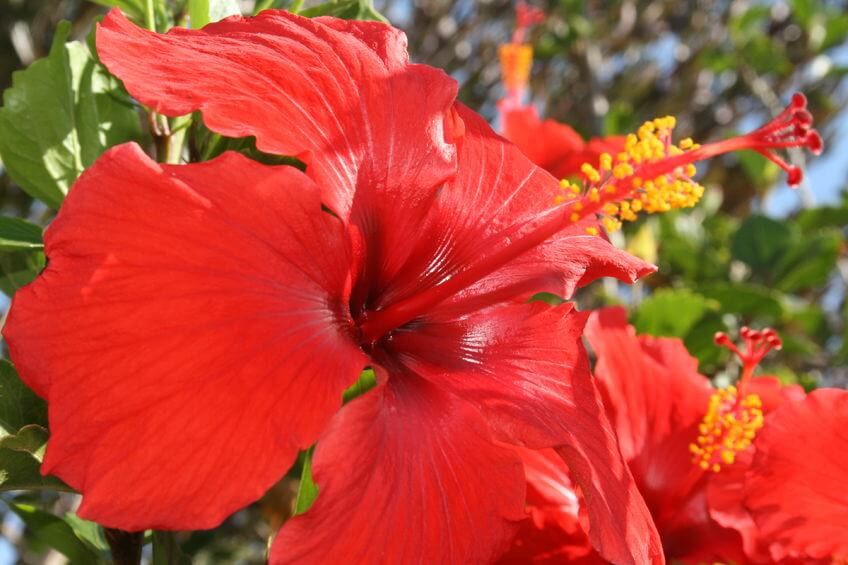HousePlantJoy is supported by our audience. When you purchase through one of our links, we may earn a small affiliate commission. As an Amazon Associate I earn from qualifying purchases. Your cost is not affected.
==================
If you dream of a home filled with color and life, best flowering houseplants are the perfect way to add vibrancy to your indoor space. Not only do these plants brighten up your environment, but they also bring a sense of calm and beauty that can enhance your mood and well-being. Whether you’re a seasoned plant parent or just starting to explore the world of indoor gardening, choosing the right flowering houseplants can transform any room into a blooming oasis.
From the stunning beauty of orchids to the cheerful bursts of color from African violets, the options are endless when selecting flowering houseplants that thrive indoors. Each variety offers something unique: long-lasting blooms, easy care, or even the ability to purify the air. In this article, we’ll explore the best flowering houseplants for vibrant blooms, helping you create an indoor garden that will leave a lasting impression on anyone who enters your door.
Top Flowering Houseplants for Brightening Your Home with Stunning Blooms
Flowering houseplants aren’t just pretty faces—they’re game-changers for any space, big or small. Imagine your living room bursting with color and life, adding that personal touch that speaks to who you are. That’s what vibrant blooms do! They’re not just there to look beautiful; they’re like little mood boosters on your windowsill. These indoor flora friends do something incredible for aesthetics. They turn even the dullest corner into a mini paradise.
Now, let’s talk about mental health. Yes, those radiant blossoms do wonders for the soul. Research shows that being around plants can help reduce stress and make you feel more zen. It’s like nature’s antidote to modern life’s hustle and bustle. A splash of color that keeps the good feels flowing!
Adding the best flowering houseplants has an overall uplifting effect on the home environment. The air feels fresher, and there’s this subtle sense of tranquility settles in. Every time you catch a glimpse of those beautiful blooms, a little moment of happiness unfolds. So next time you see the best flowering houseplants, remember—it’s not just decor; it’s a wellness hack!
Key Highlights: Best Flowering Houseplants For Vibrant Blooms
-
From the elegant orchids to the cheerful African violets, flowering houseplants offer various options to brighten any room. Each plant brings its unique charm and benefits, whether you’re looking for long-lasting blooms or air-purifying qualities.
-
Flowering houseplants don’t just add beauty—they also contribute to a sense of calm and reduce stress. Studies show that being around plants can improve mood and well-being, making them perfect for creating a peaceful, uplifting indoor environment.
-
Many flowering houseplants, like peace lilies and begonias, are relatively low-maintenance, making them ideal for beginners and experienced plant owners. With a little attention to lighting, watering, and temperature, you can enjoy vibrant blooms with minimal effort.
-
Whether you’re dealing with limited light or a sun-drenched window, there’s a flowering houseplant suited for every condition. Options like African violets thrive in lower light, while hibiscus and orchids prefer bright, indirect sunlight for optimal growth.
-
Plants like hibiscus bring a touch of the tropics into your home with their large, colorful blooms, while begonias offer an ever-changing array of vibrant colors. These flowering houseplants can turn any indoor space into a lively, dynamic oasis.
Things to Consider When Choosing a Flowering Houseplant
Before we explore the best flowering houseplants, here’s a quick rundown of things to consider when choosing a flowering houseplant.
Pick the Right Houseplant
Picking the right flowering houseplant is kind of like matchmaking. Not every plant will thrive in every space, and that’s okay. The first thing you’ll want to think about is light. Some plants need sunshine, while others are happy chilling in the shade. If your place is dimmer, maybe look into low-light options.
Watering
Watering is the next biggie. Are you someone who forgets to water? Or maybe you’re a bit too generous with the H2O? Knowing your plant’s watering needs is key, as more is not always merrier. Over or under-watering can be a real buzzkill for those happy blooms.
Temperature and Humidity
Temperature and humidity also play crucial roles. Most flowering plants prefer a specific climate to show off their best blooms. Some might need extra warmth or misting, especially in dry months. And if you crank the AC super low or keep it toasty, that could be a factor, too.
Additional Things to Consider
Safety should never be overlooked, especially if you’ve got pets or kids. Some plants might look divine but could be toxic if nibbled on. Always a good idea to check before bringing one home. Selecting the right flowering houseplant equips you better for success, ensuring those vibrant beauties brighten your space all year round. Choose wisely, and your space will be a source of gratitude!
African Violet (Saintpaulia): An Easy Indoor Bloom
African violets are like the VIPs of indoor plants—compact, colorful, and fairly easy to care for. As some of the best flowering houseplants, they bring blossoms ranging from deep purples to soft pinks, really jazzing up a windowsill or shelf.
Lighting
To help them thrive, you’ll want a spot with bright, indirect light. Avoid putting them right in the path of direct sun, as that can scorch those pretty leaves and flowers. A north or east-facing window usually works wonders.
Watering and Pests
Watering African violets can be tricky, but it’s not rocket science. These guys prefer room-temperature water, and it’s best to water them from the bottom to avoid wet leaves, which they don’t like. Allow the top inch of soil to dry out before each drench to keep them happy.
Ever spot pests or yellowing leaves? African violets can get attacked by mites or suffer due to overwatering. A quick online search can guide you on home remedies or store treatments if things look off.
Choosing African violets means inviting charm into your home without much fuss. They’re great for beginners and seasoned green thumbs alike. Just remember, giving them a little love and the right conditions leads to blooms most of the year.
Peace Lily (Spathiphyllum): Beauty with Air-Purifying Qualities
Peace lilies are the kind of plant that everyone can appreciate. Not only do they bring a classy touch with their glossy leaves and white blooms, but they also serve as mini air purifiers. They’re not just there to look good—they make your home a healthier place to be.
Lighting and Watering
When it comes to light, peace lilies are pretty laid-back. They can thrive in low light but will flower more if given a bit of indirect sunlight. Just steer clear of harsh midday rays as those can burn their leaves, which nobody wants.
Watering peace lilies is straightforward, too. They signal thirst by drooping slightly—easy peasy! Once you get that cue, a good soak usually perks them back up. Just avoid overwatering to keep those roots happy and healthy.
Benefits
Their benefits extend beyond aesthetics, with peace lilies known for their air-cleaning properties. They can help reduce pollutants like ammonia and formaldehyde, giving your lungs a bit of a breather!
If you find they’re not blooming as often, try adjusting the light or checking the pot size—sometimes, they just need a little root room or added exposure to light. Adding a peace lily to your home is like having a loyal green buddy—a plant that looks after itself and you.
Did You Know?
When it comes to flowering houseplants, picking the right pot can make all the difference. The size of the pot directly affects how well your plants thrive. Too small, and they may feel cramped; too large, and you risk drowning their roots. Look for pots that provide room for growth without overwhelming the space.
Orchid (Phalaenopsis): Elegance and Exotic Blooms
Orchids, particularly Phalaenopsis, are considered the best flowering houseplants and the glam queens of the plant world. Their exotic blooms can last for months and give off an air of sophistication and mystery, making them a real head-turner in any room.
Lighting
Caring for Phalaenopsis might initially seem daunting, but it’s not tricky once you get the hang of it. Light matters here—they like bright but indirect sunlight. A bit of morning sun or bright shade is needed; too much direct sunlight can lead to scorched leaves.
Watering and Humidity
Watering is crucial but needs a bit of practice. Orchids prefer being watered thoroughly but allowed to dry out in between. Always ensure excess water drains away to avoid soggy roots. Consider using orchid-specific pots with side slits or holes at the bottom.
Then there’s humidity, where orchids differ from your average houseplant. If your living space is drier, consider a humidity tray or occasional misting to keep them in their element.
Displaying orchids can be fun with hanging baskets or stylish pots or even mounting them on bark for a more natural look. They thrive when given a setup that resembles their natural tropics vibe. Embrace an orchid, and you bring a touch of the exotic that elevates your indoor garden game. With a basic understanding and a bit of care, these elegant flowers are more attainable to care for than you might think!
Begonia (Begonia spp.): Versatile and Vibrant Flowers
Begonias are like that cool friend who’s up for anything—easygoing, vibrant, and ready to brighten up any room they’re in. With various types, such as Rex and Wax begonias, you get a dazzling show of colors and textures.
Lighting is the Key
These plants are real charmers and aren’t overly fussy regarding their digs. Light is key for these beauties. While they love a good bask in indirect sunlight, they won’t be thrilled to sit in direct, harsh rays. Too much sun might lead to crispy leaves, and nobody wants that!
Right Watering and Propagation
When it comes to watering, keep the soil moist but not soggy. Begonias prefer their roots to be kept out of standing water. Allow the top inch of soil to dry out before another round of hydration. It’s all about balance!
For those looking to grow their begonia collection without splashing out, propagation is a fun option. Clip a few stems, pop them in water, and watch the magic of roots forming over time before planting.
Begonias adapt well to indoor conditions and offer a great splash of color and life—perfect for those who want blooms without a fuss. They’re great for budding plant enthusiasts and seasoned green thumbs alike.
Hibiscus (Hibiscus rosa-sinensis): Tropical Flair in Your Living Room
Hibiscus plants, with their large, colorful blooms, are among the best flowering houseplants, adding a touch of tropical paradise right inside your home. Think of them as a mini exotic getaway, brightening up any space with their vibrant flair.
Thrive on Loads of Sunlight
These tropical gems thrive on loads of sunlight, so they’re happiest near a sunny window. While they adore sunlight, too much can sometimes lead to wilting. Keeping an eye on them is key to finding that sweet spot between direct and indirect light.
Hibiscus plants have a thirst that matches their love for light. Regular watering is crucial, but like many houseplants, they prefer well-draining soil to prevent root rot. Allow the top layer of soil to dry out before giving them their next drink.
Right Temperature
Temperature plays a part, too—these plants aren’t big fans of chilly drafts. They love it warm, so they’d opt for a comfy room temperature if they could pick. During colder months, think about moving them away from windows or drafts.
Important Reminders to Keep in Mind
Dealing with pests and cold sensitivity is a part of hibiscus care. Keeping an eye out for common pests like aphids or whiteflies can save you headaches later on. A quick rinse or some neem oil can often do the trick to keep them at bay.
With a little care and attention, hibiscus can thrive indoors, offering stunning blooms that keep the spirit of summer alive all year round. A tropical vibe in your living room isn’t just a dream—it’s as simple as adopting one of these beauties!
Here’s an additional video about the best flowering houseplants.
By: Balcony Garden Web
Bringing Vibrancy to Your Home: The Lasting Impact of Flowering Houseplants
In conclusion, adding the best flowering houseplants to your home can transform your living space into a vibrant, blooming oasis. Each plant brings something special, whether it’s the exotic beauty of orchids, the cheerful presence of African violets, or the tropical flair of hibiscus. These houseplants enhance your home’s aesthetic and offer numerous benefits, from improving air quality to reducing stress and boosting overall well-being. With a little care and attention, these flowering plants will thrive, providing long-lasting beauty and a sense of tranquility that enriches your environment.
Remember, choosing the right flowering houseplant requires considering light, watering, and temperature. By making informed decisions and meeting their specific needs, you’ll ensure that your plants remain healthy and flourish.
Whether you’re a beginner or an experienced plant parent, the best flowering houseplants offer endless possibilities for creating a space that feels alive, vibrant, and welcoming.
So, invite these natural wonders into your home and watch them bloom into something truly spectacular!
FAQS
How Do I Encourage My Flowering Houseplants to Bloom?
To encourage blooming, ensure your plants get the right amount of light (usually bright, indirect), avoid over-watering, and ensure proper fertilization. Some plants, like orchids, may benefit from a rest period or slight changes in temperature to stimulate blooming.
Can I Grow Flowering Houseplants in Low Light?
While most flowering houseplants prefer bright, indirect light, some varieties, like peace lilies and begonias, can tolerate lower light conditions. However, remember that low light may impact the plant’s ability to bloom or grow optimally. Regularly assess the plant’s health and adjust lighting accordingly.
What's the Best Time of Year to Repot Flowering Houseplants?
The best time to repot flowering houseplants is during their dormant period, typically in early spring or late winter. Repotting during this time reduces stress on the plant and gives it a fresh start for new growth and blooms when the growing season begins.
Why Become a Member of Our Community?
Unlock Exclusive Insights: Gain vital tips that will help your plants flourish and thrive like never before.
Assistance from Professionals: Connect with our knowledgeable team on social media platforms such as Facebook and Twitter. Our gardening experts are eager to support you on your plant journey.
Network with Fellow Plant Lovers: Join other plant aficionados, exchange your stories, and cultivate a nurturing community. Sign up today! Follow Houseplant Joy on Facebook, Instagram, and Twitter for daily motivation and to enhance your plant experience! #HouseplantJoy #GreenThumbsUnite #HouseplantLove


